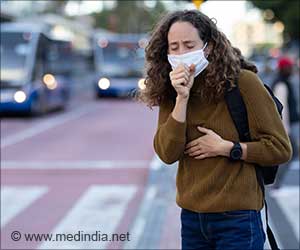A new study by researchers from the University of southern California (USC) has revealed that people get exposed to harmful air pollutants the most while travelling in their vehicles.
In a study in Los Angeles, the scientists found that the average driver spent about six percent (1.5 hours) of his or her day on the road, and this period accounted for almost 33 to 45 percent of the total exposure to diesel and ultrafine particles (UFP).“If you have otherwise healthy habits and don’t smoke, driving to work is probably the most unhealthy part of your day. Urban dwellers with long commutes are probably getting most of their UFP exposure while driving,” said Scott Fruin, D.Env, assistant professor of environmental health at the Keck School of Medicine of USC.
He said high air exchange rates as a result of vehicular movement made roadways a major source of exposure.
Ultrafine particles were of particular concern, as unlike larger particles, they could penetrate cell walls and disperse throughout the body, Prof. Fruin said.
He said while particulate matter has been previously linked to cardiovascular disease, the ultrafine fraction on roadways appeared to be more toxic than larger sizes.
As part of the study, Prof. Fruin and his team measured exposure by outfitting an electric vehicle with nine, fast-response air pollution instruments. A video recorded surrounding traffic and driving conditions on freeways and arterial roads throughout the Los Angeles region.
Advertisement
Prof. Fruin said the results showed that the two main sources of pollution were diesel-fuelled trucks on freeways and hard accelerations on surface streets.
Advertisement
“This study was the first to look at the effect of driving and traffic conditions at this level of detail and to demonstrate the specific factors leading to the highest pollutant exposures for drivers. The extent that a specific type of vehicle – diesel trucks – dominated the highest concentration conditions on freeways was unexpected,” Prof. Fruin said.
He said though driving with the windows closed and re-circulating air settings modestly reduced the particle pollution exposure, it did not significantly reduce most gaseous pollutants.
He said driving at speeds lower than 20 miles-per-hour could reduce exposure, but none of these measures were as effective as simply cutting back on driving time.
“Shortening your commute and spending less time in the car will significantly reduce your total body burden of harmful pollutants,” Prof. Fruin said.
The study appears in this month’s issue of the journal Atmospheric Environment.
Source-ANI
SRM/C







